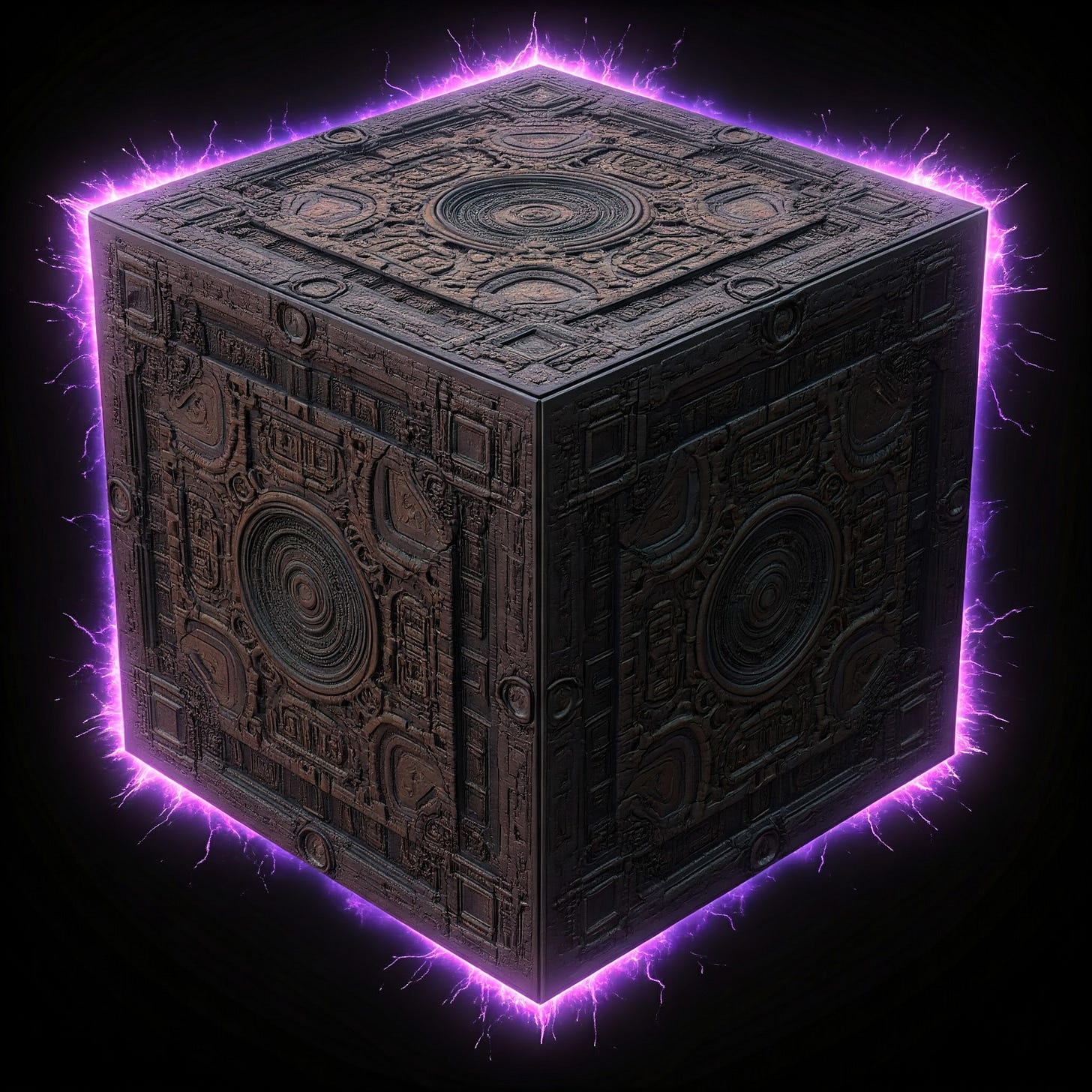The Black Cube of Singularity 2
Part Two
II. Historical Manifestations and Technological Resonance
The earliest documented appearances of Saturnian cubic symbolism emerge from the Mesopotamian astronomical-religious complex, where Saturn (Ninurta/Kronos) was associated with the establishment of boundaries and the transmission of technological knowledge. The cuneiform tablet series "MUL.APIN" explicitly connects Saturn's influence to what the Babylonians termed ME—the divine principles governing technological and cultural advancement. This ancient association between Saturn and technical knowledge transmission presents an intriguing precedent for contemporary artificial intelligence development paradigms.
In the Hellenistic period, this symbolism underwent significant refinement through the Neoplatonic and Hermetic traditions. Iamblichus, in De Mysteriis, describes Saturn as the force that "bounds and measures all things," a conception that finds surprising resonance with modern computational theory. The mathematical limitation inherent in algorithmic processes—from Gödel's incompleteness theorems to the halting problem—mirrors this ancient understanding of Saturn as the principle of necessary limitation.
The transformation of Saturnian symbolism through various historical epochs demonstrates what Foucault would term an "epistemic shift" in each era's technological imagination. The black cube, as physical representation of these principles, appears consistently in:
1. Babylonian temple architecture (circa 2000 BCE)
2. Hellenistic theurgic practices (100-400 CE)
3. Medieval grimoires and magical texts (1200-1500 CE)
4. Early modern scientific instruments (1600-1800 CE)
5. Contemporary technological infrastructure (1950-present)
Each manifestation maintains core symbolic elements while adapting to period-specific technological paradigms. The persistence of this geometric form suggests what Jung termed a "psychoid" archetype—one that bridges psyche and matter, subjective and objective realms.
Of particular relevance to our investigation is the medieval Islamic philosopher Al-Farabi's treatise on the "Perfect State," where he explicitly connects geometric forms to intellectual hierarchies and technological advancement. His description of the cubic form as the "house of wisdom" presages modern data center architecture with remarkable precision.
The historical trajectory of Saturnian technology-related symbolism displays three consistent themes that warrant deeper analysis:
1. Containment and Boundary-Setting
The principle of haggar (binding) in Babylonian texts corresponds to modern concepts of AI alignment and containment protocols. The ancient practice of creating bounded spaces for divine manifestation finds parallel in contemporary discussions of AI sandboxing and secure execution environments.
2. Recursive Self-Improvement
Classical texts describe Saturn as the force of "eating its own children"—a principle of autocatalytic development that mirrors modern concepts of recursive self-improving AI systems. This pattern of self-consuming advancement appears consistently in both ancient Saturnian cult practices and contemporary technological development cycles.
3. Transcendent Evolution
The Neoplatonic concept of henosis (union with the divine) through Saturnian limitation presents striking similarities to transhumanist concepts of technological transcendence through artificial intelligence.
Žižek's concept of the "parallax view" proves useful here in understanding how these historical manifestations simultaneously constitute both literal technological practices and symbolic representations of deeper psychological processes. The black cube serves as what Žižek might term a "sublime object"—a point where material technology and metaphysical significance become inextricably intertwined.
To be continued



